White’s Tree Frogs are a popular species of frog from Australia.
They make one of the best pet frogs as they combine the appeal of an exotic pet with very simple care needs.
White’s Tree Frogs have a docile personality. They are also more peaceful than other pet species like the Pixie and Pacman frogs. Because of their calm personality they can be kept in small groups and enjoy handling.
Are you intrigued by this friendly amphibian?
Keep reading to learn everything you need to know about their husbandry, habitat setup, diet, and much more…
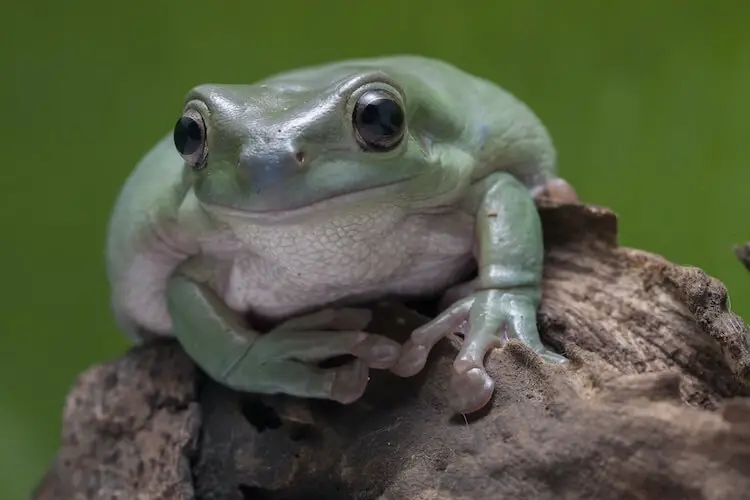
White’s Tree Frog Overview
The White’s Tree Frog (Ranoidea caerulea) is native to the humid forests of New Guinea and north-western Australia.
This species is named after the surgeon John White who first discovered them in 1790.
They are also known as dumpy tree frogs because of their chubby appearance. Adults have a fatty ridge of tissue that grows on the top of their head.
Since their discovery this species has traveled the world.
White’s Tree Frogs are highly adaptable and can live happily in different environments.
Some wild species live in urban areas. They are known to live in close contact with people and during droughts they will live in bathrooms and kitchens. Other species go into a period of dormancy during the dry months.
In captivity these frogs do not require especially high temperatures or humidity.
It is also possible for them to live peacefully with other members of their species (more on this later).
White’s Tree Frogs are loved for their docile nature and charming faces. They also have many interesting behaviors and often croak or scream.
Species Appearance
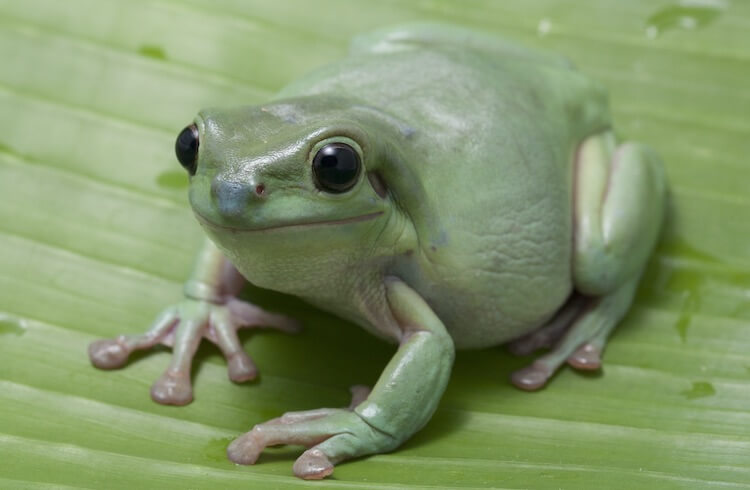
White’s Tree Frogs have large finger and toe pads with webbed feet and a round belly. Adults have a unique fatty growth on the top and sides of their heads.
These frogs also have a waxy covering over their skin that helps them retain moisture during the dry season. Interestingly their skin has a powerful antibacterial and antifungal property. It helps to protect them from fungal infections that can kill most amphibians.
White’s Tree Frogs can range in color from bright green to a light minty blue. The color varies from individual to individual, but they can slightly alter their hue depending on activity level, temperature and environment. Your frog may look different throughout the year.
At night all individuals will change their color from a green to a gray.
Most species have white or gold speckles behind the front arms and a white chin and underbelly.
Captive breeding has also resulted in several morphs. The most popular is the snowflake morph that has large white spots on its sides and back.
Size
These frogs are medium-sized and show slight size differences between males and females.
Females grow slightly larger than males and average four inches in length. Males generally stop growing after reaching three inches. When fully grown adults weigh 2.5 to 3.5 ounces.
Froglets are only an inch long and will grow to their adult size in just under two years.
White’s Tree Frog Care
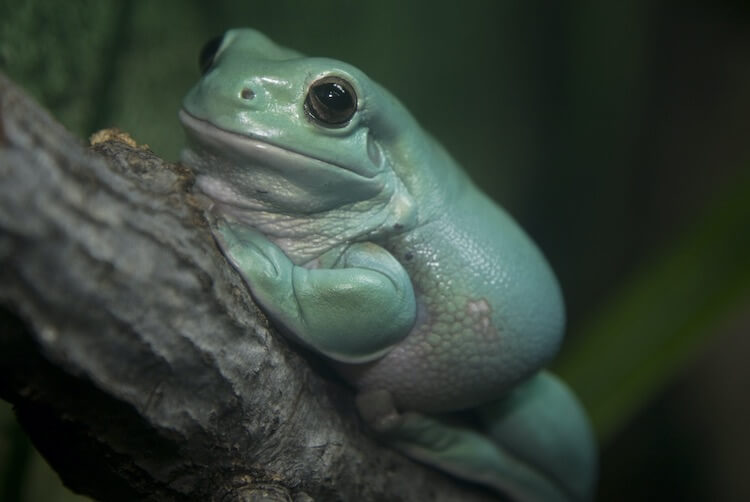
White’s Tree Frog Diet
White’s Tree Frogs are active predators of grasshoppers, spiders, moths, cockroaches, and small invertebrae in their native habitat of Australia. They do not ambush prey, but instead chase and grab insects with their tongues or front arms.
This species does well with a diet of crickets, mealworms and dubia cockroaches. You can also feed the occasional waxworm or hornworm.
A pet Tree Frog’s diet will depend on their size:
- Small froglets (up to 1.5 inches) should be fed as many small crickets as they can eat in 30 minutes.
- Juvenile frogs should be given two medium crickets twice weekly.
- Adults can have four large crickets twice a week. This can be supplemented with a pinkie mouse once a month.
Make sure that any prey items you feed are not larger than the width between your frog’s eyes. This will help to prevent choking. It is also important to dust their prey with a vitamin D3 powder once a week. Too little calcium can result in metabolic bone disease.
Frogs absorb water through their skin so you should gently mist them every evening. This not only keeps your frog hydrated but also increases the tank’s humidity.
Remember to provide them with a large shallow bowl of clean water too.
Make sure the water both in the bowl and the mister are free from chlorine, metals or other chemicals. Amphibians are highly sensitive to even small amounts of contaminants.
White’s Tree Frog Lifespan
Tree Frogs are a hardy species and live for between 15 to 20 years. The record is an individual who lived 23 years in captivity.
There are many signs that a keeper should look for to make sure their frog is healthy:
- Active behavior and vocalizing.
- Even mouth and jawline.
- Strong feeding response to prey.
- Clear skin.
White’s Tree Frogs can develop health problems in captivity. Internal parasites, obesity and injuries are not uncommon.
Internal parasites (e.g. amoebas and flatworms) are normally found in wild-caught frogs. Parasitic infections cause weight loss or watery and discolored feces. Parasites can be avoided completely by purchasing a captive-bred frog and feeding commercial insects.
Obesity is a problem that is easy to diagnose in White’s Tree Frogs.
Healthy individuals have a thick ridge of tissue running from their eyes to their ears. Obese frogs have rolls of fat that partially cover their eyes. Healthy frogs have slim fingers and obese ones have thick fingers that are creased at the joints.
White’s Tree Frog Habitat
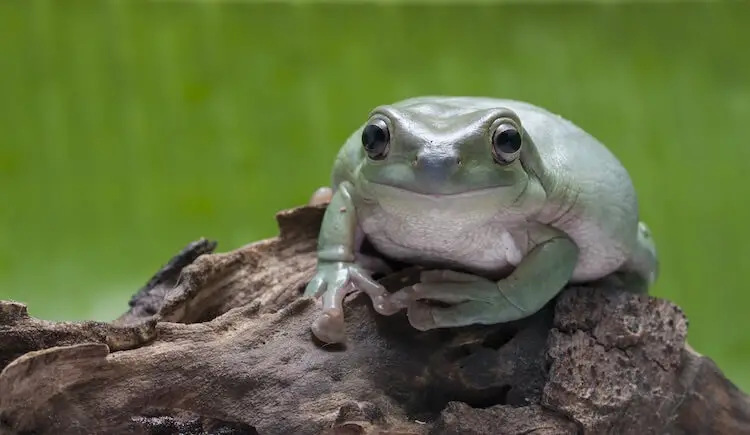
These frogs are from the warm tropics of Australia and New Guinea. This species lives through seasonal patterns of rain and drought.
Luckily you do not need to replicate these seasonal patterns in captivity.
White’s Tree Frog Setup
- Tank Type: glass or acrylic.
- Tank Size: 15-gallon tall tank.
- Lighting: 40-watt heat bulb.
- Substrate: coconut fiber.
What Size Cage Do You Need For A White’s Tree Frog
One frog will happily live in a 15-gallon tall terrarium. A cage with a vertical orientation is a must. If you are planning to add more than one to a tank then add 10-gallons per extra species.
Dumpy tree frogs are arboreal. This means they like to climb and spend most of their time in trees. Sturdy sticks, live plants or even PVC piping will let your frog express their natural climbing behaviors. Make sure their terrarium has plenty of branches, plants and climbing materials as they are very active (especially at night).
Glass or acrylic terrariums with a coconut fiber substrate are the best. This combination mimics their natural habitat and hold moisture well without molding.
Avoid using any tank with metal mesh tops as it is abrasive on your frog’s skin. Also avoid any objects in their tank that have sharp edges or rough textures.
White’s Tree Frogs need high humidity. This is important to avoid their skin drying out. Humidity should remain at 70 to 90%. To hit this level you will need to mist daily.
How Warm Should My White’s Tree Frog Tank Be?
Daytime temperatures in their tank can range from 76 to 85°F. Make sure to keep a gradient between warmer and cooler regions. A 40-watt heat bulb for a 15-gallon tank will maintain a warm spot provided it is placed near the top of the tank. At night let the temperature drop to 65 to 80°F.
White’s frogs do not need a UVB light, but, some owners find that including a low-output UVB bulb increases their frogs’ activity level.
Once setup their tank will need to be spot cleaned daily to remove any feces and uneaten food.
A deep clean should take place every two weeks. Amphibians are highly sensitive to chemicals so avoid using any soaps or sprays when cleaning their tank. A 1:30 bleach to water solution is safe to use if the enclosure is rinsed thoroughly afterward.
Behaviors: Croaking, Grunting and Screaming
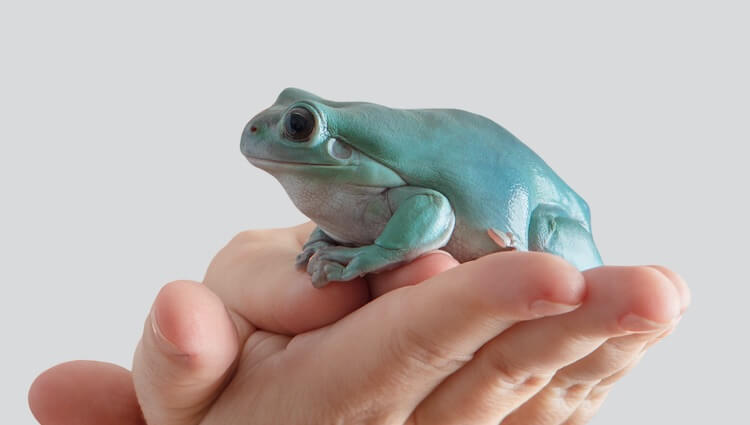
In the wild White’s Tree Frogs live alone.
This species prefers to spend most of its time in trees, hunting for insects and nestling in crevices to prevent water loss during the dry season.
In captivity, they spend most of their time high up in the enclosure. They will only come down to soak in the water bowl or catch prey. Juveniles are often more active than adults. However, frogs of all ages will become more active in the evening.
Tree Frogs are only sociable with other individuals during mating season. This occurs during the wet season from November to April. Males will group near sources of water and emit a repetitive croaking call to attract females. This is often described by keepers as grunting and screaming.
The only other time this species vocalizes is if they are distressed.
These frogs are not aggressive towards each other. They show little in the way of dominance hierarchies too. Males and females can be kept together provided there is no overcrowding.
Their natural personality very docile. This makes them easy for beginners to handle.
To pick up your frog you should:
- Hold out a flat hand in front of your frog.
- Gently push on its backside to encourage it to hop forward onto your palm.
- Make sure to support their weight and never let it hang freely.
- When holding your frog keep your hands close to the floor. White’s tree frogs are excellent jumpers.
You should thoroughly wash your hands before and after holding any amphibian. Even healthy amphibians can carry salmonella and other microorganisms that can infect humans. Also, humans can have harmful oils or contaminants on their hands that can transfer to the frog’s sensitive skin.
Buying A White’s Tree Frog
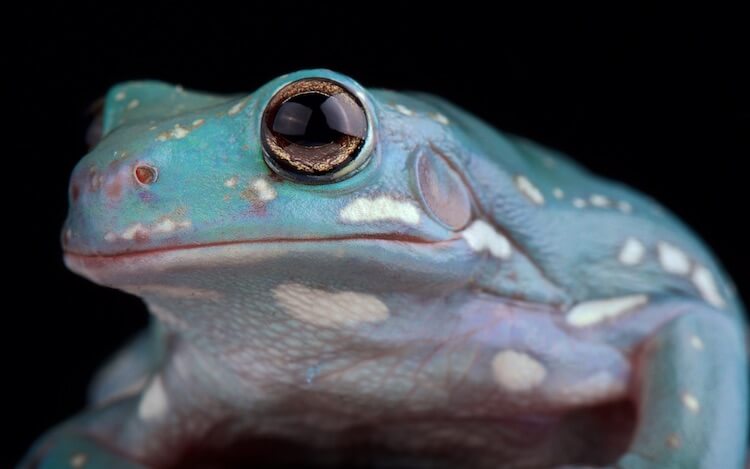
White’s Tree Frog are normally sold as froglets and adults. Tadpoles and eggs are fragile and have a high mortality rate if shipped over long distances. If you are interested in raising your own White’s tree frogs the best option is to buy a pair of breeding adults.
Normal or wild-type White’s Tree Frogs are normally $35 to $50.
Rare morphs such as the blue-eyed honey morph are the most expensive species at over $100.
Common morphs such as the blue phase and snowflake tree frogs are $50.
Healthy pet frogs should be active, bright-eyed and have no visible signs of injury or illness.
They should also be well fed but not obese. A severely overweight frog has a higher risk of developing health problems.
If you can then check the breeder’s setup. Make sure it is clean and not overcrowded.
When you bring home your White’s Tree Frog it will need a few days to adjust to its enclosure. It will be more active during the first few days as it explores its enclosure.
Let your frog spend 48 hours without being handled or fed. After it has had time to become familiar with its surroundings you can start a normal feeding schedule.
White’s Tree Frog Facts
| Other Common Name | Dumpy Tree Frog, Australian Green Tree Frog |
|---|---|
| Scientific Name | Litoria caerulea. |
| Price | $35 to $50 |
| Size | Males are 3 to 3.5 inches Females are 4 to 4.5 inches. |
| Lifespan | 15 to 20 years |
| Diet | Crickets, roaches, worms and occasional mice |
| Popular Alternatives | White-Lipped Tree Frog, Pixie Frog, American Green Tree Frog, Fire-Belly Toad |
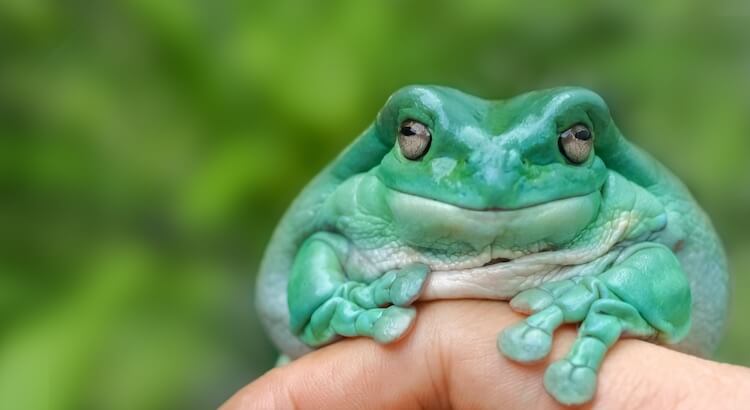
Summary
White’s Tree Frogs are one of the best pet frogs for beginners.
Their chubby appearance makes them instantly recognizable. Adults are green and have round bellies with a fatty ridge of tissue that grows on the top of their head.
Tree Frogs have a docile personality so are easy to handle and their wide availability makes it easy to find healthy captive bred species.
They are best suited to adults who are gentle. They are not suitable for children to handle because of their delicate skin and soft bodies.
Make sure you provide your tree frog with a 15-gallon tall tank with plenty of branches and plants, and you will have a very healthy pet frog.
Have you already got a White’s tree frog? Share some care tips in the comments below.

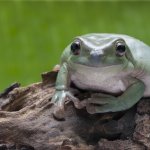
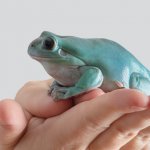
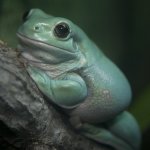
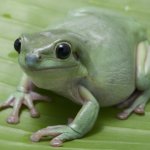
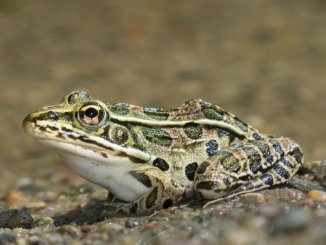
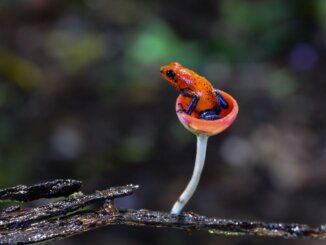
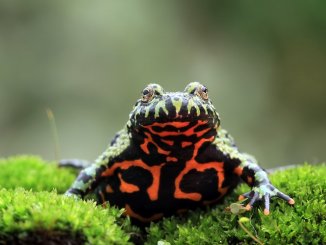

really helpful!